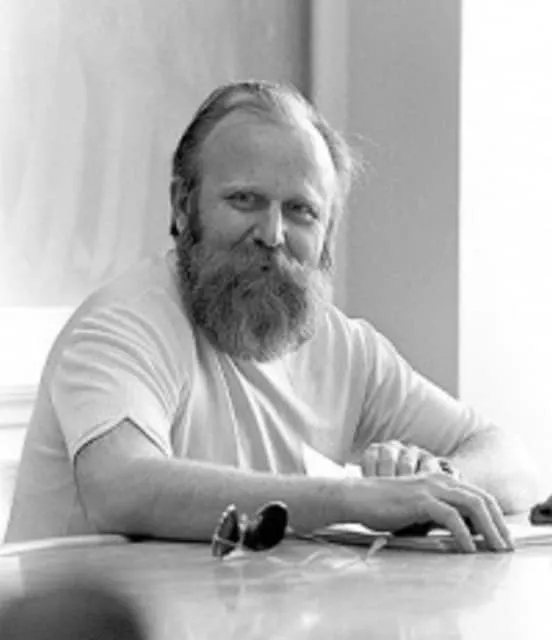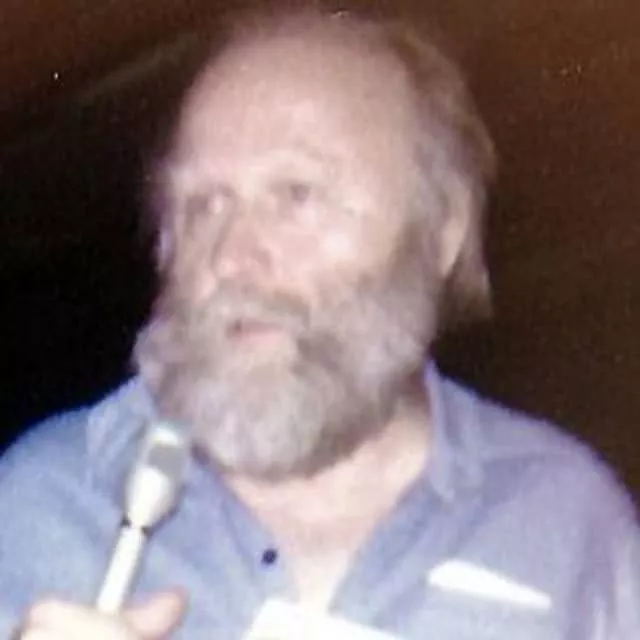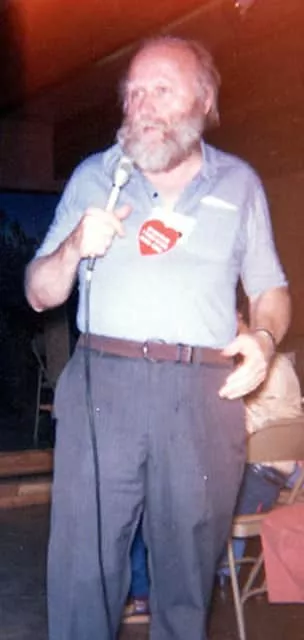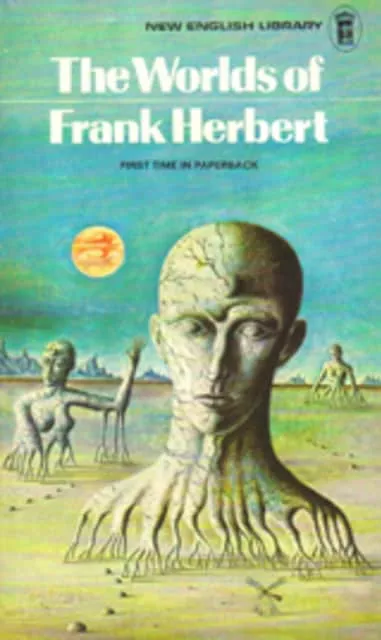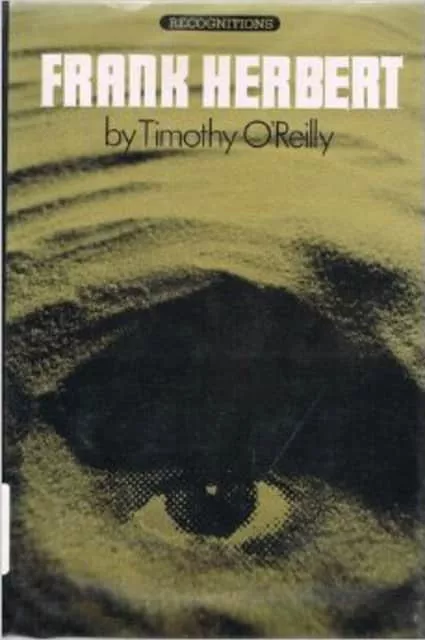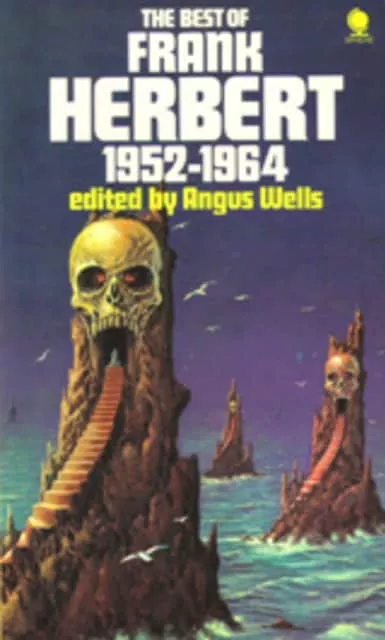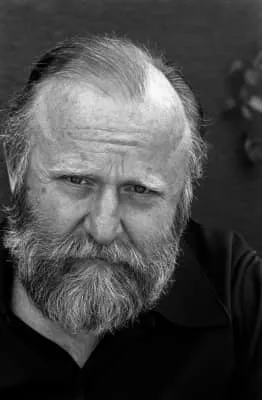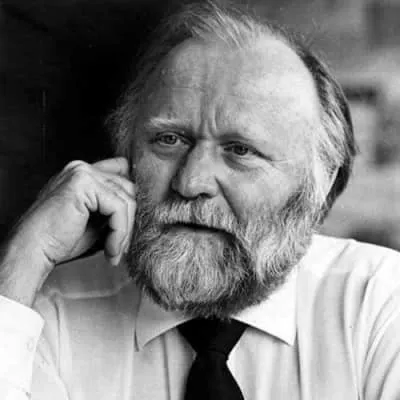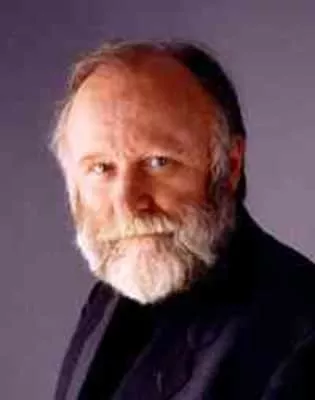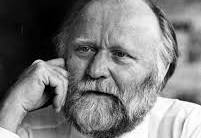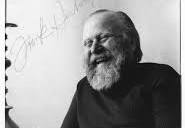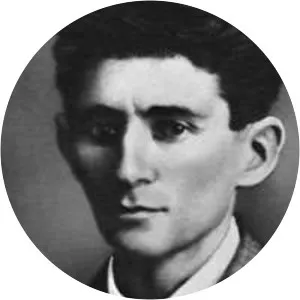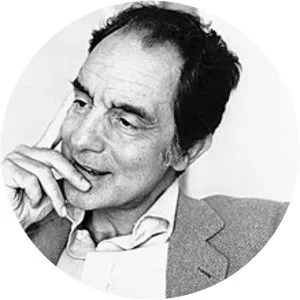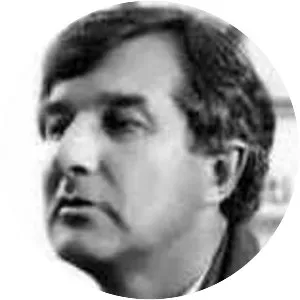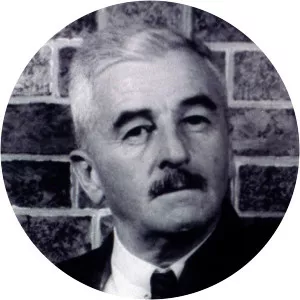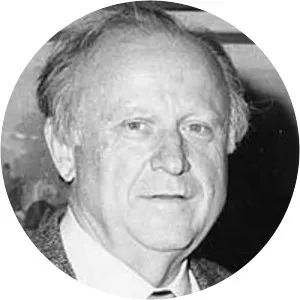
Frank Herbert
| Use attributes for filter ! | |
| Gender | Male |
|---|---|
| Death | 37 years ago |
| Date of birth | October 8,1920 |
| Zodiac sign | Libra |
| Born | Tacoma |
| Washington | |
| United States | |
| Date of died | February 11,1986 |
| Died | UW Health University Hospital |
| Madison | |
| Wisconsin | |
| United States | |
| Spouse | Theresa Shackleford |
| Beverley Ann Stuart | |
| Flora Parkinson | |
| Job | Author |
| Journalist | |
| Novelist | |
| Education | North Salem High School |
| University of Washington | |
| Lincoln High School | |
| Movies/Shows | Dune |
| Threshold: The Blue Angels Experience | |
| Dune: Part II | |
| Awards | Nebula Award for Best Novel |
| Hugo Award for Best Novel | |
| Grandchildren | Kim Herbert |
| Julie Herbert | |
| Margaux Beverly Herbert | |
| Children | Brian Herbert |
| Bruce Calvin Herbert | |
| Penny Herbert | |
| Parents | Frank Patrick Herbert Sr. |
| Eileen Herbert | |
| Influences | Jules Verne |
| Alan Watts | |
| H. G. Wells | |
| Edgar Rice Burroughs | |
| Jack Vance | |
| Poul Anderson | |
| Alfred Korzybski | |
| Date of Reg. | |
| Date of Upd. | |
| ID | 445795 |
Dune Messiah
Children of Dune
God Emperor of Dune
Chapterhouse: Dune
Heretics of Dune
The Dosadi Experiment
Whipping Star
The Santaroga Barrier
The White Plague
The Jesus Incident
Hellstrom's Hive
The Godmakers
Destination: Void
Man of Two Worlds
The Ascension Factor
The Green Brain
The Lazarus Effect
The Eyes of Heisenberg
The Dragon in the Sea
The Heaven Makers
Soul Catcher
The Worlds of Frank Herbert
The Collected Stories of Frank Herbert
The Book of Frank Herbert
Direct Descent
Dune: House Corrino
The Best of Frank Herbert
The Road to Dune
Eye
A Game of Authors
High-Opp
Angels' Fall
The Priests of Psi
The Dune Audio Collection
Four Complete Novels
A Thorn in the Bush
The Notebooks of Frank Herbert's Dune
Sisterhood of Dune
Without Me You're Nothing: The Essential Guide to Home Computers
Navigators of Dune
The maker of Dune
Operation Haystack
Old Rambling House
Frank Herbert: Unpublished Stories
Dune: The Gateway Collection
Der Herr des Wüstenplaneten
The Science Fiction Archive #6
More Fantastic Stories
Lieu: Science Fiction Short Stories
Battles of Dune
Frank Herbert Life story
Franklin Patrick Herbert Jr. was an American science fiction author best known for the 1965 novel Dune and its five sequels. Though he became famous for his novels, he also wrote short stories and worked as a newspaper journalist, photographer, book reviewer, ecological consultant, and lecturer.
Film lookahead: 23 highlights to look out for in 2023

... This film should roughly tell the story of the second half of author Frank Herbert s original novel...
Namit Malhotra: The Indian who won a VFX Oscar for Dune

... The sweeping majesty of the desert comes alive in Denis Villeneuve s epic sci-fi film based on Frank Herbert s 1965 novel...
Oscars 2022: Which film might be named fan favourite?

... DuneDescription: Timothée Chalamet and Zendaya star in Denis Villeneuve s attempt to finally make a beloved film version of Frank Herbert s epic science fiction novel...
15 films to look out for in the Oscars race
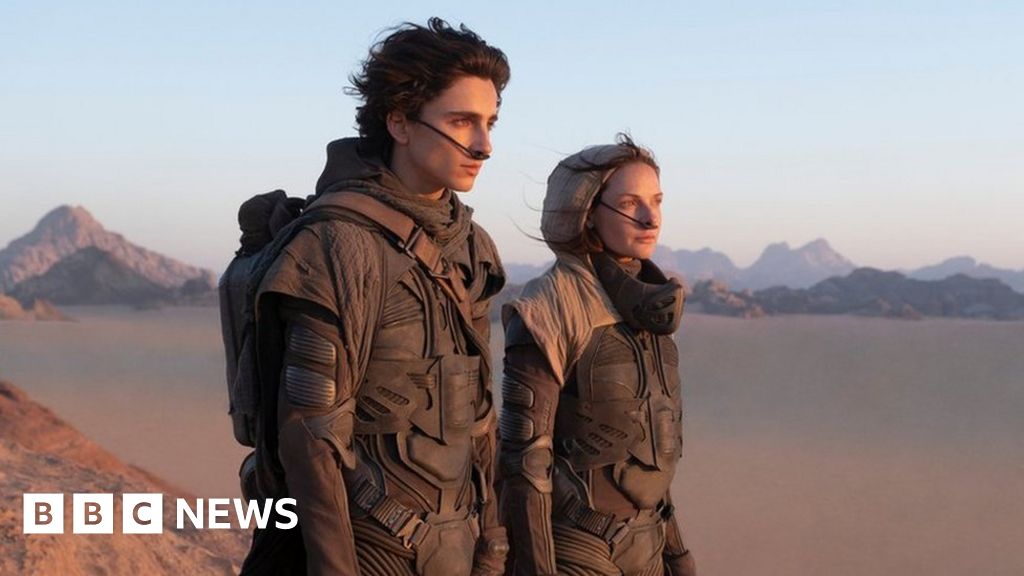
... DuneWhat s it about? - It s a new adaptation of Frank Herbert s science fantasy novel about the son of a noble family, and his role in safeguarding the galaxy s most valuable substance...
Not to miss movies lookahead: 20--films up to 2020
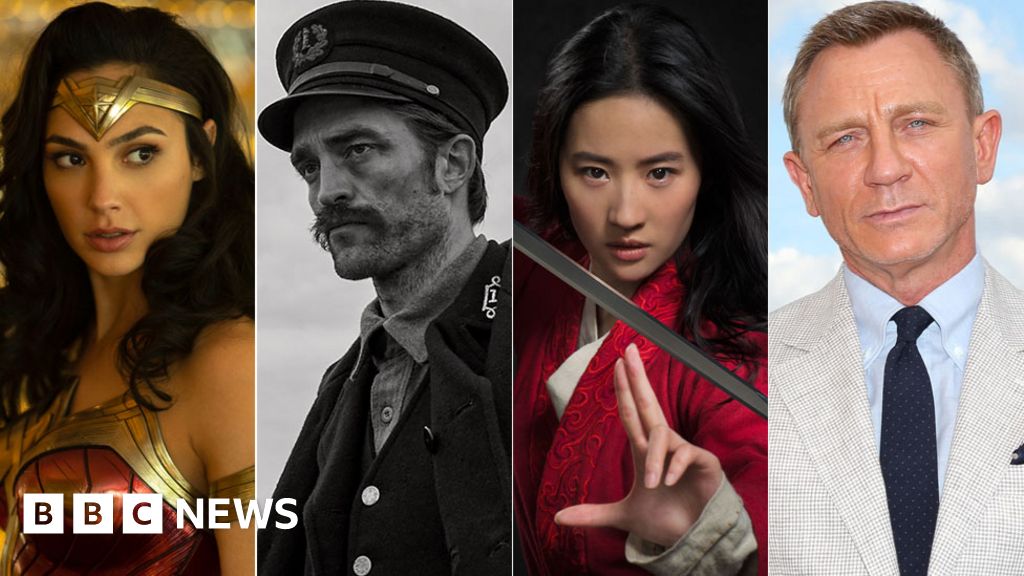
......
Namit Malhotra: The Indian who won a VFX Oscar for Dune
Just minutes into watching Dune, it's easy to see why it won an Oscar for its visual Effects .
The sweeping majesty of the desert comes alive in Denis Villeneuve 's epic sci-fi film based on Frank Herbert 's 1965 novel. Critics have called it a " " with " " designs and textures.
But what few know is that Namit Malhotra , the 46-year-old CEO behind The Company that crafted Dune's stunning visual Effects , started His journey in India - and specifically Bollywood.
The Desert Planet of Arrakis - where this saga of love and war unfolds - was designed in astounding detail by London-based visual Effects and animation company DNEG. Its team of graphic designers and engineers made nearly 1,200 VFX shots of The Film 's 1,700 - The Film 's that each element was designed to " heighten the photorealism of Villeneuve's immersive vision".
" What you actually experience is a function of production design, music, cinematography and many other parts coming together to create that world, " Mr Malhotra says over The Phone from His office in London.
It's a long way from The Garage in Mumbai, India 's financial hub, where he launched His business in 1995. Now, he heads a global firm that has won seven Oscars.
He knew he would always be associated with The World of movies - His grandfather was a Bollywood cinematographer who worked on one of India 's first colour films in 1953, Jhansi Ki Rani. His father produced major Bollywood films, including Shahenshah, a 1988 Cult Classic starring superstar Amitabh Bachchan .
Just after he turned 18, Mr Malhotra told His father he wanted to become a director. But His father, who had observed how fast The Movie business was changing, encouraged him to learn more about The Craft of Making Movies , including what was happening on the technology side.
He Said that Mr Malhotra " could direct films anytime" but tech was a gamechanger.
So, Mr Malhotra started a company, offering editing services to filmmakers. A year later, in 1995, he founded Prime Focus , which expanded to do post-production.
" When we started, we were constantly innovating. Everything we did was The First of its kind in India , " Mr Malhotra says.
In 2004, they brought a motion-control rig - a robotic crane used for special visual Effects - to India for the First Time .
" It was a complicated tool. It would take four hours to Set Up on a shoot. Actors and directors would say, 'What is this thing?'" he recalls.
By then, Indians had watched Hollywood spectacles such as The Lord of The Rings trilogy, which used technology such as the Digital Intermediate (DI) process to tweak colour and image characteristics.
" We were able to replicate that, " he says.
But as Prime Focus grew, Mr Malhotra says he found that Indian filmmakers were slow to adapt to The Changes if offered.
" Change is very hard in The Film business. They're comfortable with how they make their movies. It was a struggle to get everybody to latch on to new technology, " he says.
That's when he began thinking of expanding abroad.
" What gave me confidence was that we could do this in India at one-fourth The Price . So why couldn't we leverage this and take it to The West ? "
Prime Focus - which listed on Indian stock exchanges in 2006 - Soon entered the US and the UK by acquiring smaller post-production companies.
In 2010, it was The First company to convert an entire Hollywood film - Clash of The Titans - from 2D to 3D.
Four Years later, it bought London-based Double Negative , which had already won an Oscar for visual Effects for Christopher Nolan 's Inception.
Since then, The Company has won six more Oscars for visual affects, including for Tenet and Interstellar.
Mr Malhotra is still actively interested in the Indian Film industry and is one of The Producers of the upcoming Bollywood superhero movie Brahmastra.
" Everyone likes a spectacle. Everyone likes Spiderman. Everyone likes Avatar, " he says.
And Indians films are starting to sped more on visual affects, he adds, pointing to Telugu Film Director SS Rajamouli's blockbuster period extravaganza, Baahubali, and now, RRR.
" The spend on VFX is going up. These films are ground-breaking in The Sense that we haven't seen a period film that has used visuals Effects to bring in such a 'wow' experience" he says.
Why has India , which started Making Movies More Than a century ago, not produced a film like Avatar or Interstellar?
" Our filmmakers have a different Reference Point for cinema, " Mr Malhotra says - Nolan , for instance, regards Stanley Kubrick 's sci-fi epic 2001: A Space Odyssey as the benchmark of filmmaking.
" So when Nolan wants to make an Interstellar, he's thinking of how can he push the boundaries of filmmaking and storytelling like that film did in 1968, " he says.
Indian directors, on The Other hand, turn to the country's own rich Film History for inspiration.
" If [director and ac] Raj Kapoor was very popular with a certain kind of filmmaking in the 50s and 60s, there are more movies which will take a piece out of that cinema rather than give you a Star Wars or Space Odyssey . "
You may also be interested in:Source of news: bbc.com
